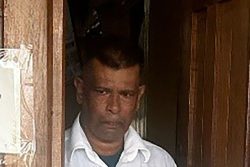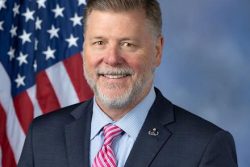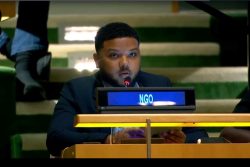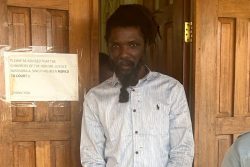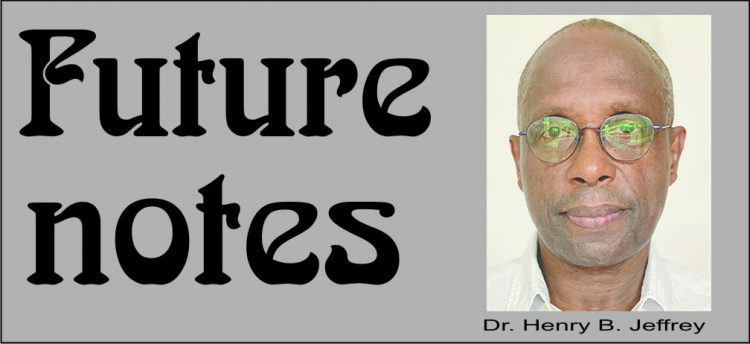 On New Year’s Day 2021, Eusi Kwayana, commenting on what he appeared to have considered some rather outlandish exaggerations emanating from the government, recommended that equal time on the state media ‘should be offered as early as possible to the official representatives of the previous coalition government to respond as it sees fit, and is inclined to do to the indictment placed into the public arena by the Honourable Minister of Finance on December 29, 2020. Such an offer if it is accepted will allow the population to form opinions based on what each of the main rivals is prepared to defend as true and factual.’ My own position is that in this communications era if the leaders of the previous regime have rebuttals and care to make them, there are now significant opportunities via press conferences, social media, letter writing, etc. However, the media have significant influence over economic, political and social life and it is expected that its coverage will be impartial and balanced.
On New Year’s Day 2021, Eusi Kwayana, commenting on what he appeared to have considered some rather outlandish exaggerations emanating from the government, recommended that equal time on the state media ‘should be offered as early as possible to the official representatives of the previous coalition government to respond as it sees fit, and is inclined to do to the indictment placed into the public arena by the Honourable Minister of Finance on December 29, 2020. Such an offer if it is accepted will allow the population to form opinions based on what each of the main rivals is prepared to defend as true and factual.’ My own position is that in this communications era if the leaders of the previous regime have rebuttals and care to make them, there are now significant opportunities via press conferences, social media, letter writing, etc. However, the media have significant influence over economic, political and social life and it is expected that its coverage will be impartial and balanced.
At Article 146, the Constitution of Guyana states, ‘Except with his own consent, no person shall be hindered in the enjoyment of his freedom of expression, that is to say, freedom to hold opinions without interference, freedom to receive ideas and information without interference, freedom to communicate ideas and information without interference and freedom from interference with his correspondence.’ And in the political realm we are regularly reminded that ‘if the media coverage in the press and on television is not free and fair, the results may be prejudiced to an extent that the elections as a whole, even if the formal process of voting has been organised correctly, may be judged not to have been free and fair.’ (Bernd-Peter Lange & David Ward ed. (2004) The Media and Elections: A Handbook and Comparative Study. Lawrence Erlbaum Associates).
Yet Kwayana has been sufficiently long in politics to know that his would be a fleeting if not a forlorn hope. For much of Guyana’s pre-independence era, the press lined up against the ‘communist’ People’s Progressive Party and the coming to government of the People’s National Congress (PNC) and independence did little to change that. Between 1973 and 1980, the PNC government gained control of 90% of the mass media, so that in when in about the late 1970s it fell out with the United States, the US State Department reported that, ‘Although the Constitution guarantees freedom of speech, press, religion and assembly, … The daily press and local radio are government owned and serve as organs of the ruling party.’
The PNC was an autocratic regime but expectations were high when the PPP in its 1992 manifesto told us that ‘Under a PPP/CIVIC administration a free and democratic media policy will mean: … opening the media to different shades of opinion; making the state-owned media autonomous with a management board comprising representatives of political parties, trade unions, religious and socio-economic groups; establishment of an independent broad-based Publications and Broadcasting Authority which will propose standards in keeping with journalistic ethics, balance and fairness.’ However, ten years after the return to ‘democracy’ the PPP was yet to fulfill this promise, which was again extracted from it by Desmond Hoyte during the lead up to Herdmanston Accord of 1998. So that President Bharrat Jagdeo agreed with Robert Corbin, the Leader of the Opposition, ‘that equitable access to the State Owned Media should be established immediately and an independent National Broadcast Authority should be realized within three months.’
It took another decade of much meandering and delays for the Guyana National Broadcasting Authority, which oversees all television, cable and radio broadcasters, to be established in 2012. Among other things, the Authority promised that its efforts would reflect the diverse social, cultural, political and economic nature of the Guyanese society by providing varied programming … [that] provides important news and public affairs programming which meets the highest standards of journalism, including fair and unbiased coverage, impartiality and balance; and ensures compliance with the constitution and laws of Guyana and shall not incite violence, ethnic, religious or cultural hostility.’
In Guyana, the difference between political theory and practice abounds and the existence of this Authority has made little difference: the state media has continued to be treated as the political hand-maiden of both the PPP/C and the APNU+AFC governments that followed. Indeed, just before it left office in 2015, the PPP/C government was attempting to utilise state advertisements to pressure that part of the media not in its control. Unsurprisingly, immediately after the APNU+AFC government came to office, its prime minister, long associated with the media and one of the more vociferous fighters for press freedom and a return to democracy, was being accused of attempting to tamper with the editorial of the state newspaper and become embroiled in its day to day management. And here we have Kwayana’s observation and recommendation!
The first amendment to the US Constitution places the freedom of media outside the remit of even the legislature. ‘Congress shall make no law abridging the freedom of speech, or of the press.’ And given the importance of the media and the historical behaviour of the political elites, equitable access to the media and state media should be more strongly protected constitutional rights. However, in these types of cases stronger rules will make little difference if one is not properly aware of the difficulty to be overcome.
For example, the board of the Guyana National Broadcasting Authority (GNBA) is comprised of ‘not less than four nor more than seven members, one of whom shall be the Chairman. (2) The President shall appoint the Chairman and all members of the Board. (3) One of the members of the Board shall be nominated by the Leader of the Opposition for appointment after he has had meaningful consultation with the parliamentary opposition parties. (4) The Managing Director of the National Frequency Management Unit or its successor shall be an ex-officio member of the Board without the right to vote.’
The above arrangement can work in a majoritarian system where on any given controversial issue public political opinions can substantially change to the detriment of the rulers. It may also work in multiethnic Suriname where no single party has been able to win the 2/3 majority that is required for election of the president and, unless the government has a political death wish, it has to be circumspect about how it behaves and how its appointees behave in relation to the other constituencies.
It will not work in Guyana where the ethnic division is essentially bicommunal and history has produced far more intense ethnic relations. In the GNBA example, very marginal ethnic majoritarian presidents have free reign to do as they please, knowing full well that there does not exist a substantial public opinion to thwart their rule, which if necessary can be supplemented by some other very minor political party. When there is a deficit of public opinion, the political representatives themselves, by various forms of veto rules, must enforce public accountability.
What has happened in the media environment over the decades resulted from an incapacity to properly understand and design a system that reflects the Guyanese reality. It is ironic that those who orchestrated the long delay in establishing the GNBA etc. appear not to have understood the futility of their effort because they recognised only the traditional theoretical possibilities of these arrangements without grasping their fundamental weakness when locked in the kind of majoritarian political environment that is Guyana. Kwayana is whistling in the wind!



